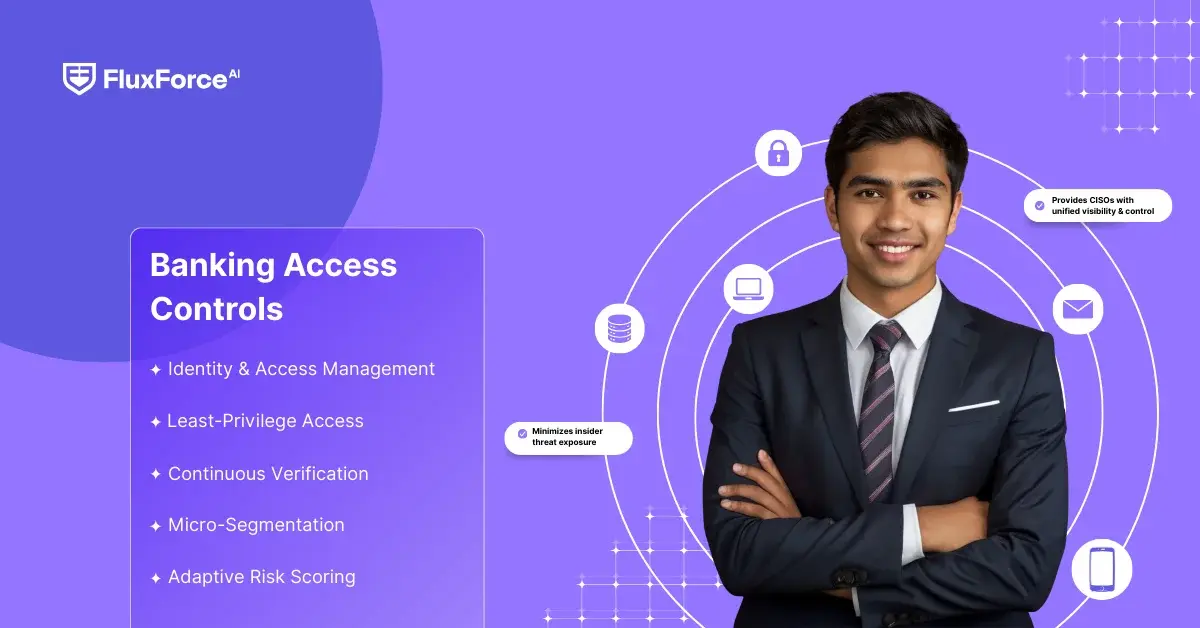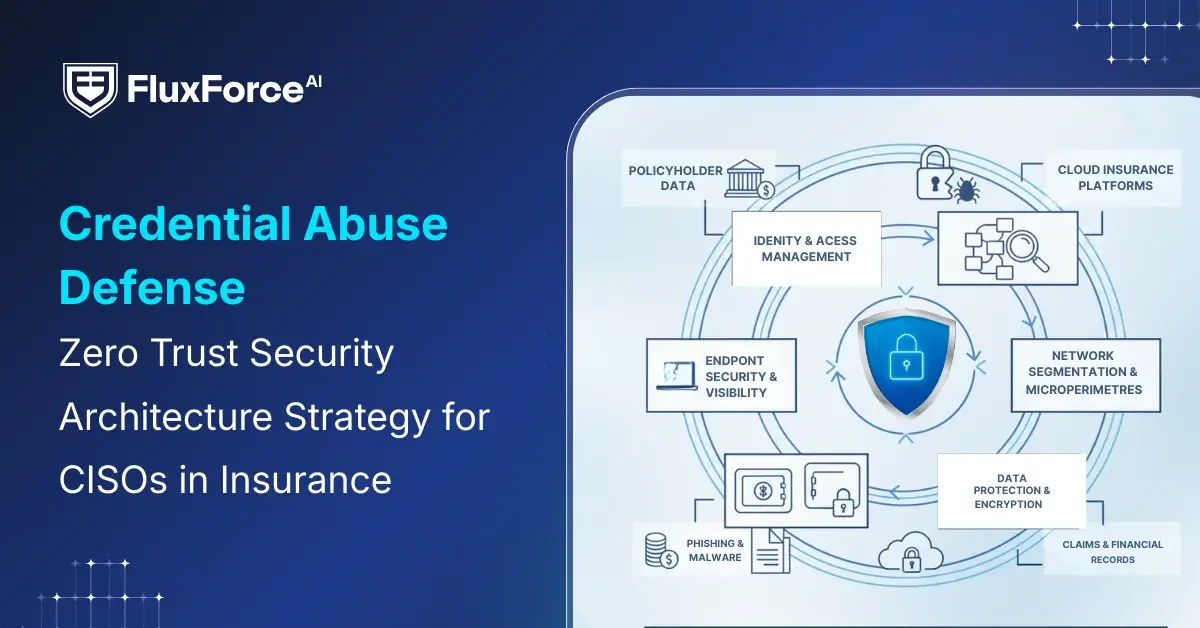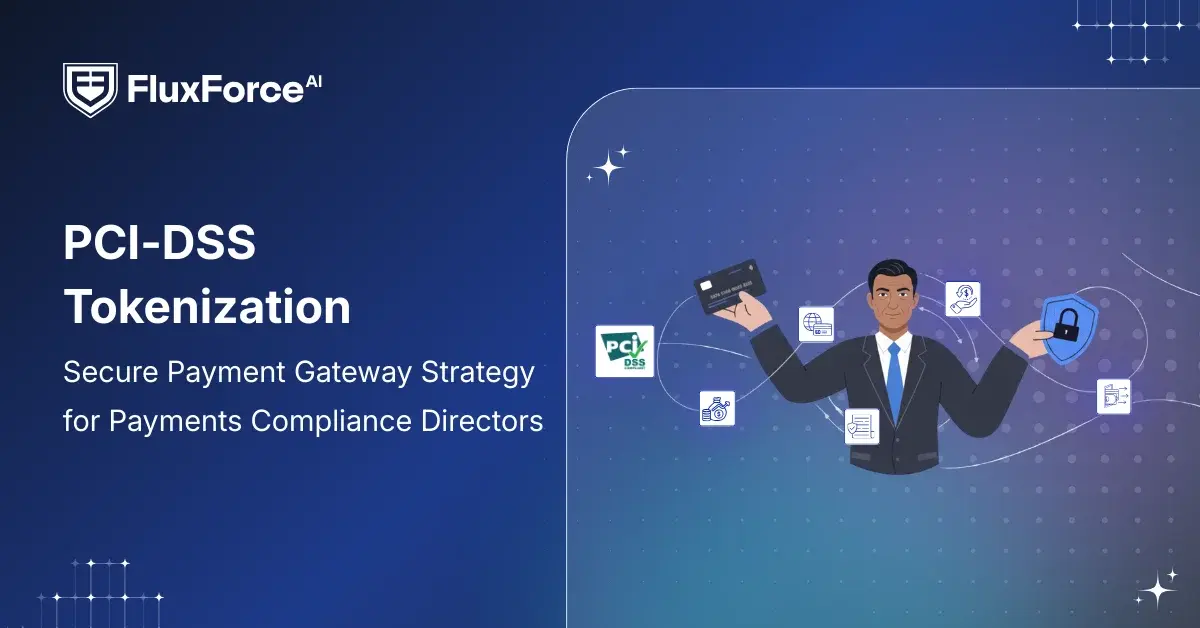
Introduction
The greatest concern for banking Chief Information Security Officers (CISOs) is a cyber breach or attack hitting the headlines. However, shifting from perimeter-based defenses to Zero Trust access controls has significantly reduced exposure for many institutions.
Research shows that 87% of organizations applying the “never trust, always verify” principle report significant reductions in incidents, with nearly half the risk of major breaches reduced compared to legacy models.
In banking environments, Zero Trust Architecture (ZTA) is the most discussed security approach, yet its complexity often creates execution challenges for security leaders.
This article discusses key strategies for implementing Zero Trust in banking access controls, highlighting the real challenges and measures that can transform implementation into lasting security gains.
Why CISOs Need Zero Trust Framework for Banking Cybersecurity
Since the shift to remote banking operations, securing the enterprise has expanded from internal to external surface. Traditional perimeter-based defenses, once breached, exposes weaknesses to critical banking systems. Zero Trust Architecture (ZTA) addressed these gaps by removing implicit trust and enforcing continuous verification across users or devices.
For CISOs, implementing Zero Trust in banking security systems:
1. Reduce Insider Threats and Privilege Misuse: Internal actors are accountable for nearly 60% of banking breaches. ZTA enforces role-based access to limit employees and contractors get access only to the systems and data required for their responsibilities.
2. Prevent Lateral Movement Across Systems: Attackers who gain initial entry often attempt to move laterally into payment networks, customer databases, or trading systems. With network micro segmentation, Zero Trust limits these pathways.
3. Secure Third-Party and Partner Access: Modern banking depends on API connections with fintech partners and external vendors. Zero Trust applies the same strict authentication and continuous verification to these external connections for reducing exposure.
4. Strengthen Compliance and Audit Readiness: Frameworks like DORA, PCI DSS, and ISO 27001 demand proof of strong access controls. Zero Trust delivers audit-ready logs and automated reporting, which reduces compliance costs significantly.
Core Challenges in Implementing Zero Trust in Banks

Adopting Zero Trust in banking environments often comes with challenges that security leaders must address. These include:
- Legacy Systems Incompatibility to Modern Access Controls: Most banks still operate on mainframes or decades-old platforms. These systems were never designed for continuous verification or dynamic access policies.
- Balancing Security with Customer Experience: Zero Trust demands strict, continuous authentication. However, banking customers expect fast and frictionless digital services. Overly rigid access controls may create frustration among customers.
- Complexities in Third-Party Zero Trust Enforcement: Modern banks depend on vendors, fintechs, and managed service providers with varying security maturity. Extending Zero Trust policies to these external parties often requires contractual, technical, and procedural alignment.
- High Implementation and Integration Costs: Zero Trust adoption requires investment in automated tools, cloud technologies, and specialized expertise.
- Cultural Resistance: Employees familiar to broad access privileges may resist tighter controls. A structured communication plan and training is necessary to align stakeholders with Zero Trust objectives.
Strategic Implementation of Zero Trust Security Architecture for Banking CISOs

The foundational pillars of Zero Trust policies define how secure banking access controls can be executed. Below are key strategies how CISOs can effectively strengthen banking security with zero trust:
Identity-Centric Access Management
Implement Zero Trust identity and access management in banks by assigning risk-based access and adaptive multi-factor authentication (MFA) for employees, contractors, and external partners. Continuous verification ensures that only authorized actors gain access to sensitive financial systems.
Least Privilege Enforcement
Apply role-based and dynamic access controls to limit permissions to only what is necessary. This reduces exposure to insider threats and minimizes the potential impact of compromised accounts.
Network Segmentation and Micro-Segmentation
Use zero trust network segmentation for banking cybersecurity to isolate sensitive environments, including payment processing, trading systems, and customer databases. This approach confines any breach and prevents lateral movement across systems.
Continuous Monitoring and Behavioural Analytics
Deploy advanced monitoring tools to track access patterns and detect anomalies. CISOs can use predictive analytics to proactively mitigate risks, prevent insider threats, and respond to unusual access attempts.
Privileged Access Management (PAM)
Secure high-privilege accounts and administrative roles with dedicated controls, session monitoring, and strict approval workflows. PAM reduces the risk of critical system compromise.
Integrated Bank Security Systems
Ensure core systems like bank surveillance system, security alarm system for banks, and access control vestibule cyber security are integrated with Zero Trust policies. This creates a unified, monitored security posture across both physical and digital banking environments.

Shaping the Future of AI in Finance
Fluxforce research uncovers how banks and enterprises are adapting to fraud, compliance, and data challenges in 2025.
Tips for Aligning Zero Trust with Banking Regulations
Regulatory compliance remains a critical driver for banking security investments. Zero Trust architecture naturally supports many regulatory requirements while providing additional benefits:
Documentation and Audit Trails: Implement comprehensive logging solutions that capture all access attempts, policy decisions, and security events. These logs serve as evidence of due diligence during regulatory examinations and provide forensic capabilities for incident investigations.
Data Loss Prevention (DLP) Integration: Deploy DLP solutions that monitor data movement across Zero Trust boundaries. This ensures sensitive customer information and financial data remain protected regardless of user location or device type.
Incident Response Integration: Establish automated incident response workflows that leverage Zero Trust telemetry. When security events are detected, the system should automatically isolate affected users or systems while preserving evidence for investigation.
Regular Policy Testing and Validation: Conduct quarterly penetration testing and red team exercises specifically focused on Zero Trust controls. This proactive approach demonstrates security maturity to regulators and identifies potential weaknesses before they can be exploited.
Ensuring Continued Zero Trust Success: What CISOs Should Track?
Zero Trust is not a one-time deployment. CISOs must continuously measure access behaviours, monitor system anomalies, and validate controls to maintain resilience, reduce risk, and protect critical banking assets.
- Access Request Patterns: Track which employees and third parties request access, how frequently, and whether requests align with roles. Unusual patterns may indicate misuse or compromised accounts.
- Privileged Account Usage: Monitor all high-privilege accounts, including temporary admin access. Review for anomalies and enforce time-bound permissions to reduce insider threats.
- Anomaly Detection Alerts: Use analytics to identify abnormal login locations, unusual times, or high-volume transactions. Early detection prevents escalation and limits potential breaches.
- Policy Compliance Metrics: Measure adherence to Zero Trust policies across teams. Identify gaps in MFA, segmentation, or least-privilege enforcement to improve overall security posture.
- Incident Response Timelines: Track how quickly alerts are investigated and resolved. Faster response reduces impact, protects data, and demonstrates operational maturity to regulators.
Onboard Customers in Seconds

Conclusion
Zero Trust Architecture delivers a comprehensive, adaptive approach to banking cybersecurity, overcoming the limitations of traditional perimeter-based models. For CISOs, it provides a structured framework to control access, mitigate insider threats, and protect critical financial systems.
As regulatory scrutiny and cyberattacks intensify, CISOs must not only implement Zero Trust but also align it with compliance requirements, operational resilience, and business priorities.
When executed strategically, Zero Trust transforms access controls into a measurable security advantage, ensuring that financial institutions remain protected, audit-ready, and resilient against evolving threats.






Share this article